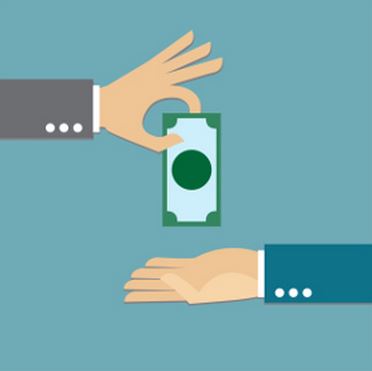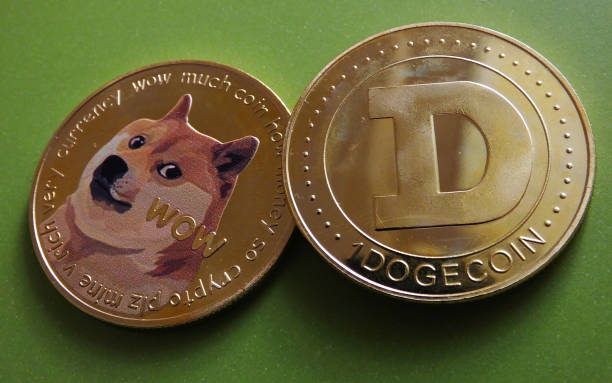Bitcoinist spoke with the team from lending platform INLOCK on how its platform solves the spendability problem for users of Bitcoin and other cryptocurrencies while providing the option to remain ‘hodlers’.
Wanted to ‘hodl’ when you should have ‘sodl’ or vice versa? Despite incredible potential, the nascent cryptocurrency industry is still behind in terms of financial services and tools that offer flexibility when compared to traditional finance.
Lending platform InLock wants to change this by enabling cryptocurrency to be used as collateral for a loan in fiat — effectively solving the short-term spendability problem. At the same time, borrowers can remain ‘hodlers‘ with the option to get their cryptocurrency back in full after the loan is paid off, regardless of any changes in price.

InLock CEO Csaba Csabai, CMO Peter Gergo, and CSO Benedict Banathy shed light on how InLock makes this possible — as well as advantages over other crypto P2P lenders like SALT and Nexo — and why they’ll be integrating Bitcoin’s Lightning Network to provide even more financial services.
Bitcoinist: You say that Bitcoin and crypto have a spendability problem. Can you elaborate on this?
Csaba: When we looked at the Bitcoin blockchain, we found that 40% of all bitcoins existing today had not been moved at all in the past year. Looking back at 2017, there were plenty of reasons to move them: hard forks, the mempool crisis, regulation problems, an amazing bull run, followed by a 70% correction.
Bitcoinist: How big of a barrier is it to Bitcoin’s global adoption?
Peter: There are many problems blocking mass global adoption of cryptocurrency and only one of them is the spendability problem. To date, it is still relatively hard to find a merchant who will accept crypto as a means of payment.
Additionally, bitcoin’s volatility can make it risky to spend or exchange them. No one knows what the price is going to be 6 months from now or even tomorrow. Value stability is a core tenant of any highly usable currency.
Additionally, exchanging crypto is a taxable trade, while using them as collateral to finance temporary liquidity problems is not.
Bitcoinist: How does INLOCK solve this spendability problem?
Benedict: Regardless of the exchange rate or the perceived value of Bitcoin, no one can argue that it doesn’t have value. Anything that has value has the potential to be used as collateral. The way we solve the spendability problem is by enabling our customers to never have to sell their crypto to finance a temporary liquidity problem.
Bitcoinist: Who can be a borrower on your platform? Who can be a lender?
Csaba: According to regulation, after passing our KYC process, anyone who owns crypto-assets can borrow Fiat through our platform. Institutional lenders who have the license to lend Fiat and have been approved by our legal framework can become lenders on our platform. It is important to note that on the INLOCK platform, lenders are competing for borrowers. Market-competition is in effect ensuring that borrowers get the best offer suited for their needs.
Bitcoinist: What have you done so far to bring attention to this problem and what kind of response have you received? Specifically, who has shown interest in getting crypto loans or becoming lenders?
Csaba: We’ve been going through several validation processes the past few months to make sure that when we make our first few announcements, we’ll be ready with the MVP demo, which will enable the community to experience the INLOCK platform. We already have our first payment provider and lender partner signed up: Virpay.
Virpay has been supportive of INLOCK since the start and as one of the most innovative fintech companies in the Central and Eastern Europe region. It’s no surprise they were the first to understand INLOCK’s potential. We officially kicked off our international roadshow presenting the INLOCK Project at the IoP conference in Berlin. We’d like to take this opportunity to thank the IoP conference organizers for the invitation, warm welcome, and support from their amazing community.
Bitcoinist: Some have argued that traditional financial practices like fractional reserve lending have fueled boom and bust cycles and were partially responsible for the ’08 crisis. How is lending with crypto any better?
Peter: The idea of lending crypto is irresponsible and we do not do that. We allow people to use their crypto as collateral for a Fiat loan. In our platform, the level of risk taking for exchange rate fluctuations is fully customizable by the Borrower. This way, we contribute to the stability of the whole crypto ecosystem.

Bitcoinist: Why did you decide to launch an ICO compared to traditional funding methods and issue your own ILK token?
Csaba: The INLOCK platform prepares a Smart Contract to record the legal relationship between parties, which is then digitally signed by INLOCK and 3 independent participants, giving them certain rights – the participants are the borrower, lender and collateral manager.
The collateral manager handles the collateral for the entire duration of the loan. The Smart Contracts run on the blockchain, containing trustless evidence and tasks which make sure of the integrity of all participants. Our tokens are essential for the INLOCK ecosystem and it’s impossible to transact on the platform without it.
Benedict: About the ICO: The public token sale is one of the most effective ways of attracting capital but beyond that, it’s a great way to let people know we exist and to share how INLOCK will impact the cryptocurrency world.
Bitcoinist: Why does your platform need its own token? Can’t you just use bitcoin instead?
Csaba: The ILK tokens represent compensation for resources used; without the tokens, these costs would need to be directly deducted from the collateral, which is contrary to the philosophy of the INLOCK platform. INLOCK was created to mobilize the purchasing power of cryptocurrencies without having to sell or trade them. The token enables this exchange.
Bitcoinist: You’re not the first to develop a crypto lending platform. There are SALT, Nexo, and Ethlend, for example. Why should someone use INLOCK instead of those mentioned?
Peter: After consulting with law firms, it quickly became clear that the key to our success is to be compliant with regulation. Before entering any new regions, we will develop the regulatory framework for lenders and collateral managers in coordination with local authorities.
As we bring in institutional lenders to the crypto space, we will most likely have the most liquidity available for our customers to use. We are a lending platform so we are not limited to our own liquidity like many of our competitors.
Like you mentioned, there are many platforms, but only a few are able to deliver. The existing crypto lending solutions liquidity and territorial coverage combined are not sufficient to meet all the customer demands at the moment. Most of the tokenized crypto platforms collected funding to have liquidity for borrowers. We instead use our investments for business development – we aim to go global as soon as possible.
Bitcoinist: According to your roadmap, Q1 2019 will see the implementation of layer-2 payments channels (such as Lightning Network). Could you elaborate on this? Would this improve your lending service?
Csaba: It is not directly related to the lending service, it is something else, we offer many interesting ways to utilize Bitcoin.
We enable our customers to use our own lightning network channels instantly without having to build their own channels.
In case of positive market changes, the collateral of a running contract becomes more than sufficient to cover for the loan. Now our customers can either deduct the extra amount from the contract, or they can spend the excess amount through INLOCK’s LN channels instantly.
The most exciting thing our customers are able to do is, if they have available cryptocurrency within INLOCK’s wallet that is not locked into any contracts, they have an option to allow the platform to use the excess amount of crypto to provide additional liquidity for the LN channels. All revenue generated this way will be credited to the customers 100% after each LN cycle.
Bitcoinist: But what happens if there are negative market changes like a big crash? How does that affect the loan?
Peter: It will be terminated, and the lender will be paid in full. But that’s the last step, we constantly monitor the health of each loan, and notify the borrower. They have the option to resupply the loan to avoid termination.
Bitcoinist: Anything else you’d like to add?
Benedict: Those interested in our project can try our demo: mvp-demo.inlock.io. Please feel free to join our Telegram channel: t.me/inlock.
Do you think such a crypto-collateral lending platform can be a valuable addition to the cryptocurrency ecosystem? Share your thoughts below!
Images courtesy of Inlock.io, Shutterstock








